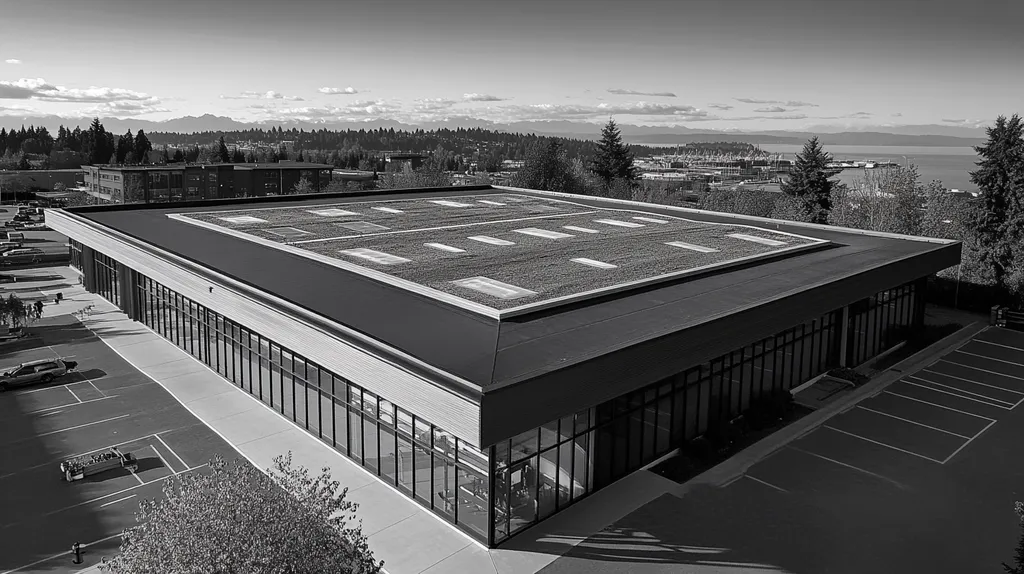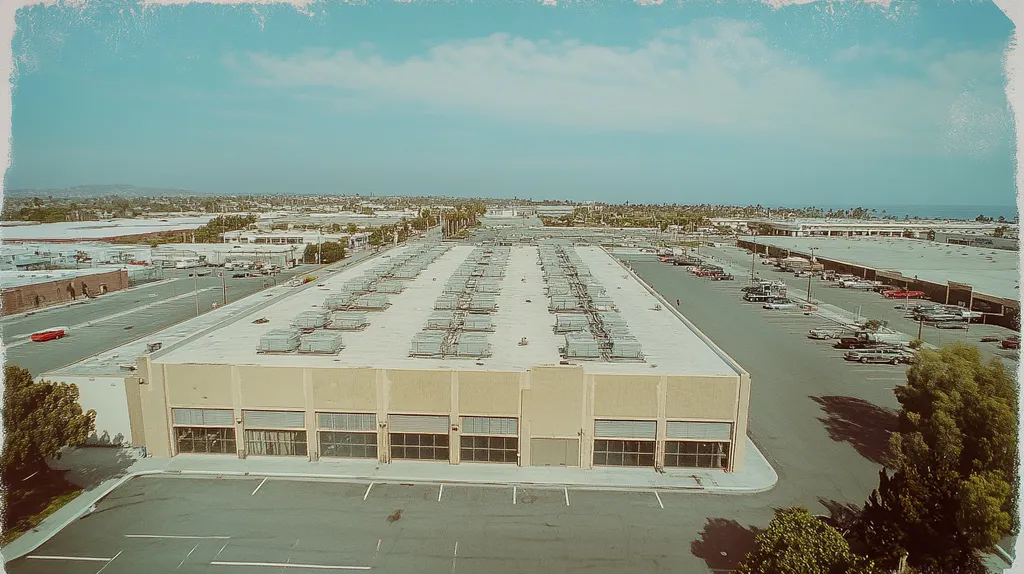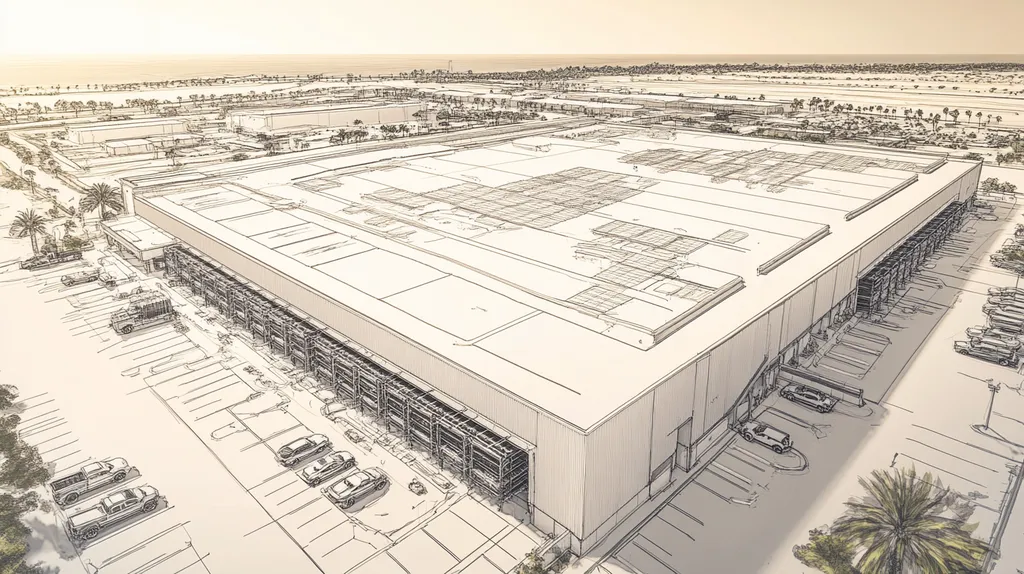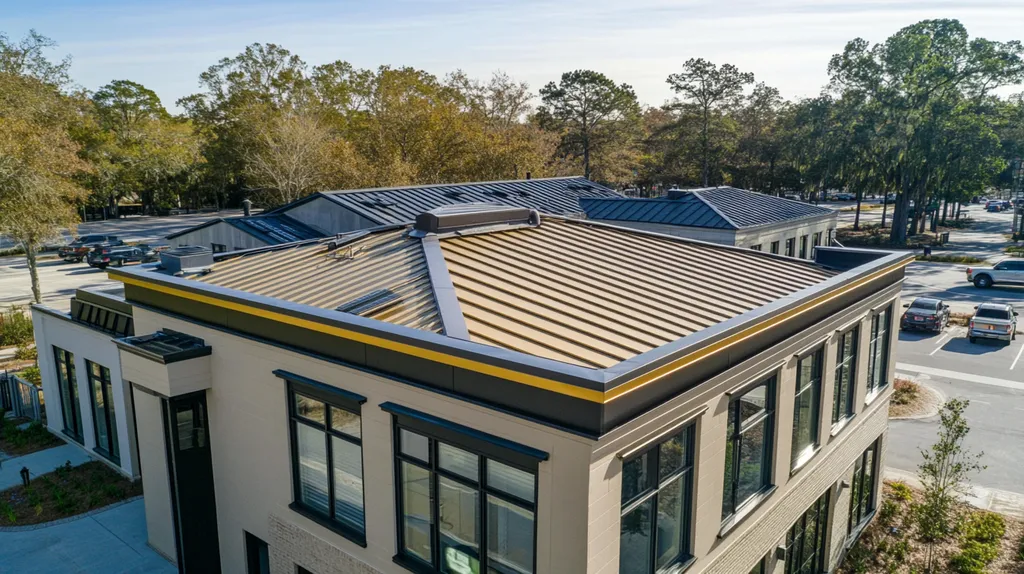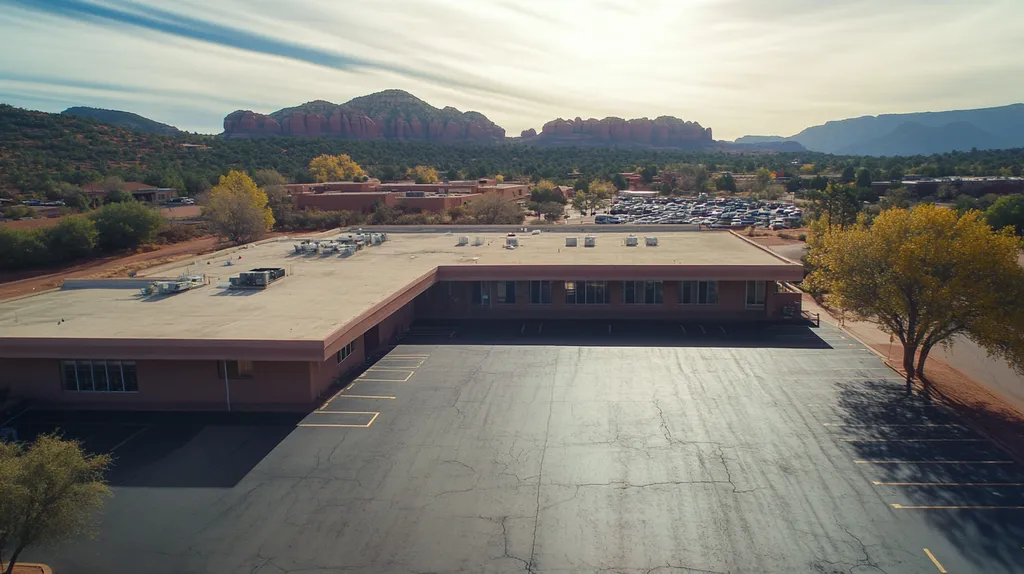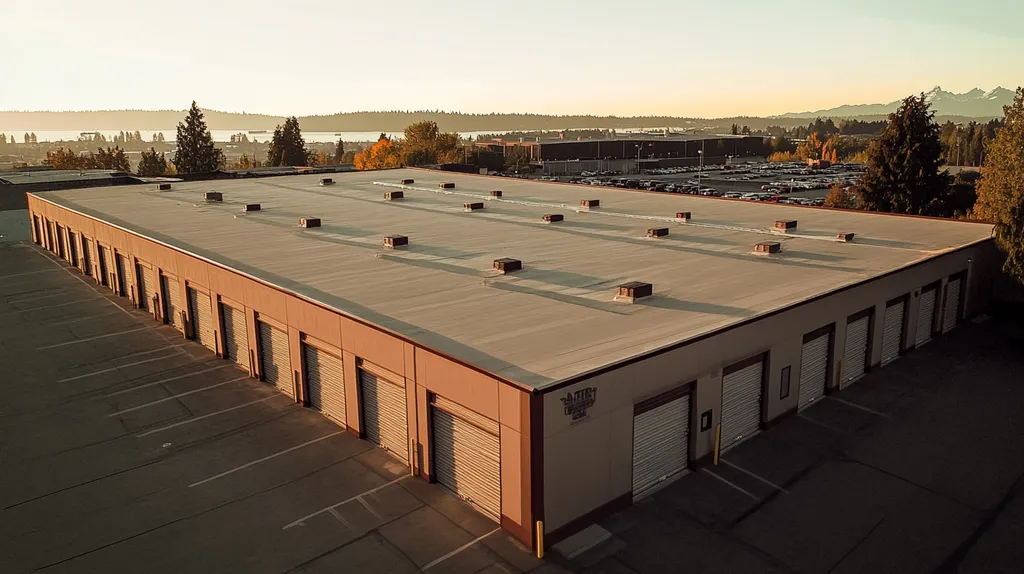Commercial roofing systems face an increasingly urgent battle against pest infestations, with industry studies showing damage costs exceeding $2.5 billion annually across North America. Without proper preventive materials and implementation strategies, even minor pest intrusions can escalate into catastrophic structural failures.
From specialized membrane compounds to integrated barrier systems, modern roofing technology offers multiple layers of defense against unwanted wildlife. However, selecting and properly implementing these materials requires deep understanding of both pest behavior and roofing system dynamics.
This comprehensive guide examines the essential materials, components, and implementation methods that create effective pest prevention systems for commercial roofs, helping facility managers protect their substantial roofing investments.
SECTION 1: FUNDAMENTAL CONCEPTS
Commercial roofs face constant threats from pest invasions, with devastating consequences for building integrity and operational costs. Industry data shows that pest-related roof damage accounts for up to 15% of premature roof system failures. For facility managers and property owners, understanding the fundamentals of pest behavior and prevention isn’t just about maintenance—it’s about protecting their substantial investment in roofing infrastructure.
Understanding Pest Behavior on Commercial Roofs
Commercial roofs create ideal environments for pests, offering shelter, warmth, and often moisture from HVAC systems. These conditions particularly attract rodents, birds, and insects seeking nesting sites.
Different pests exhibit specific patterns in their rooftop activities. Rodents typically search for entry points near utility penetrations, while birds concentrate around drainage systems and mechanical equipment.
Temperature fluctuations and seasonal changes significantly influence pest activity levels. During colder months, pests become more aggressive in seeking shelter, making autumn a critical time for prevention.
Understanding these behavioral patterns enables facility managers to anticipate and prevent infestations before they begin. Regular monitoring of high-risk areas helps identify early warning signs of pest activity.
Common Entry Points and Vulnerabilities
Modern commercial roofs contain numerous potential entry points that pests can exploit. The most vulnerable areas include roof penetrations, flashing joints, and areas where different roofing materials meet.
Gaps in corrugated metal roofing present particular challenges, but innovative solutions like reticulated polyurethane exclusion strips provide effective, non-toxic barriers against bats, birds, and bees without requiring adhesives or special tools. (source: Wildlife Control Supplies)
Deteriorating sealants and weathered materials create additional access points. Even small openings can expand rapidly once pests begin exploiting them.
Roof edges and corners require special attention, as these areas often experience the most wear and provide natural entry points. Regular inspection of these vulnerable zones helps maintain building envelope integrity.
Impact of Pests on Roof Integrity and Building Health
Pest infestations create both immediate and long-term consequences for commercial roofs. Direct damage includes torn membranes, compromised insulation, and blocked drainage systems.
The presence of pests often leads to accelerated deterioration of roofing materials. Nesting materials can retain moisture, leading to premature aging of roof components and potential structural weakness.
Building operations suffer when pests compromise roofing systems. HVAC efficiency decreases when insulation is damaged, while blocked drainage can lead to ponding water and potential roof collapse.
The financial impact extends beyond repair costs. Energy inefficiency, increased maintenance requirements, and potential health code violations all contribute to the total cost of pest-related damage.
SECTION 2: SYSTEM COMPONENTS
The integrity of commercial roofing systems depends heavily on their ability to resist pest intrusion. Without proper system components, even minor pest access points can lead to catastrophic damage, with repair costs often exceeding $50,000 for severe infestations. Modern roofing technology offers multiple layers of defense, from specialized materials to integrated deterrent systems, creating a comprehensive shield against unwanted wildlife.
Pest-Resistant Roofing Materials and Their Properties
Advanced roofing membranes now incorporate specialized compounds designed specifically to resist pest damage. These materials feature enhanced puncture resistance and reinforced seams that prevent rodents from creating entry points.
Modern TPO and EPDM membranes utilize multi-layer construction techniques that make penetration nearly impossible for most pests. The outer layer provides weather protection while inner reinforcement layers maintain structural integrity even under sustained pest activity.
Material selection must consider regional pest pressures. Northern climates require materials resistant to roof rats seeking winter shelter, while southern regions need protection against persistent insect colonies.
Chemical-resistant formulations prevent degradation from pest urine and droppings, extending roof life significantly. These materials maintain their protective properties even after years of exposure to biological waste.
Protective Hardware: Vent Covers, Exclusion Strips, and Screens
Stainless steel bird spikes and specialized gutter protection systems provide reliable defense against large birds without causing harm. These UV-resistant components come with extensive warranties and require professional installation for optimal performance. (source: Bird B Gone)
Reinforced vent covers utilize industrial-grade metals and specialized mesh patterns that prevent entry while maintaining proper airflow. These components require precise sizing and installation to eliminate potential access points.
Exclusion strips made from durable composites seal gaps between roofing components. These flexible barriers adapt to building movement while maintaining their protective properties.
Screen systems for larger openings combine strength with visibility, allowing maintenance inspection while blocking pest access. Strategic placement around HVAC units and other equipment prevents nesting without impeding system function.
Coatings and Barriers with Integrated Wildlife Deterrents
Modern roof coatings incorporate advanced repellent technologies that create hostile environments for pests without compromising roof performance. These coatings bond molecularly with existing materials to provide seamless protection.
Barrier systems now feature multi-sensory deterrents that target specific pest species. Visual, tactile, and olfactory repellents work together to create comprehensive protection against multiple threat types.
Smart coating systems adapt to environmental conditions, maintaining their effectiveness through temperature and weather changes. This dynamic response ensures consistent protection throughout seasonal pest activity cycles.
Integration of UV-stable compounds extends the functional life of deterrent properties. These advanced formulations resist degradation from sun exposure while maintaining their pest-resistant characteristics.
SECTION 3: IMPLEMENTATION METHODS
Every year, commercial buildings face mounting challenges from pest intrusions, with industry data showing damages exceeding $400 million annually. Proper implementation of pest prevention systems isn’t just about material selection—it’s about precise installation, strategic integration, and ongoing vigilance. This section explores proven methodologies that protect commercial roofing investments through systematic implementation of pest-resistant solutions.
Installation Techniques for Pest-Resistant Materials
Successful pest prevention starts with proper material placement and sequencing. Core components include reinforced membrane overlays, specialized edge treatments, and integrated barrier systems designed to work together as a unified defense.
Temperature control during installation is critical for ensuring proper adhesion and seam integrity. Materials must be installed within manufacturer-specified temperature ranges to achieve optimal pest-resistant properties.
Seam reinforcement requires particular attention, as these junctions represent primary vulnerability points. Double-welded seams with reinforced edge sealants provide superior resistance to pest penetration.
Strategic placement of pest-resistant materials should focus on high-risk areas first. Areas around mechanical equipment, roof penetrations, and drainage systems require enhanced protection measures.
Integrating Mechanical and Chemical Deterrent Systems
Effective integration requires a layered approach combining physical barriers with chemical deterrents. Mechanical systems serve as the first line of defense, while chemical treatments provide secondary protection against persistent pests.
Scheduling of chemical applications must align with pest activity patterns. Seasonal treatments coordinated with mechanical system maintenance maximize overall effectiveness.
Electronic monitoring systems can enhance traditional pest control measures. Modern sensors detect pest activity early, allowing for rapid response before significant damage occurs.
Training maintenance staff on system operation ensures consistent protection. Regular updates on monitoring protocols and response procedures maintain system effectiveness.
Best Practices for Sealing and Securing Roof Penetrations
For corrugated metal roofs, reticulated polyurethane exclusion strips provide an effective solution for sealing difficult-to-protect gaps. These specialized strips create reliable barriers against bats, birds, and bees without requiring adhesives or special installation tools. (source: Wildlife Control Supplies)
Flash points require systematic sealing procedures using compatible materials. Proper flashing installation includes overlap requirements and specific sealant applications based on penetration type.
Regular inspection schedules must include detailed examination of all penetration points. Documentation of condition changes helps identify developing problems before they become critical.
Repair protocols should specify appropriate materials and methods for different types of penetrations. Using standardized repair procedures ensures consistent quality and reliable pest exclusion.
SECTION 4: MAINTENANCE REQUIREMENTS
For commercial property owners, roof maintenance isn’t just about preserving assets—it’s about preventing costly pest infestations that can devastate roofing systems. Industry data shows that neglected maintenance leads to a 40% increase in pest-related roof failures within the first five years. Even minor oversights in maintenance routines can create entry points that pests rapidly exploit, leading to structural damage and compromised building operations.
Scheduled Inspections for Early Pest Detection
Commercial roofs require systematic inspection protocols that focus specifically on pest-vulnerable areas. These inspections should occur quarterly, with additional checks following severe weather events.
Documentation must track both active infestations and conditions that could attract pests. This includes monitoring moisture levels, identifying damaged materials, and assessing the integrity of pest barriers.
Thermal imaging and moisture mapping help detect hidden pest activity before visible damage occurs. These technologies can identify unusual heat patterns that often indicate pest presence.
Establishing clear inspection zones ensures comprehensive coverage of the entire roof surface. Special attention should focus on areas around HVAC units, drainage systems, and roof penetrations.
Cleaning and Clearing Debris to Reduce Pest Harborage
Effective debris management requires more than simple sweeping—it demands a strategic approach to prevent pest colonization. Commercial roofs need monthly clearing of organic matter that could provide nesting materials.
Commercial roofing systems are designed to provide protection and durability but require vigilant maintenance to prevent pest infestations that compromise their integrity and performance. Regular cleaning, sealing of gaps, and installation of protective screens on vents help maintain the roof’s defensive capabilities. (source: LKP Roofing Thorne)
Drainage pathways require particular attention to prevent water accumulation. Blocked drains create moisture conditions that attract insects and promote decay.
Professional cleaning teams should use specialized equipment designed for commercial roofs. This ensures thorough debris removal without damaging protective coatings or membranes.
Repairing and Reinforcing Vulnerable Roof Areas
Repair protocols must address both existing damage and potential weak points in pest defense systems. This includes reinforcing seams, replacing deteriorated sealants, and upgrading protective barriers.
Material selection for repairs should prioritize pest-resistant properties. Modern sealants and patching compounds incorporate deterrent properties that discourage pest activity.
Reinforcement strategies must consider seasonal pest pressure variations. Additional protection may be needed during peak activity periods or before harsh weather conditions.
Maintenance teams should maintain detailed repair logs tracking both locations and materials used. This documentation helps identify patterns of vulnerability and evaluate the effectiveness of different repair approaches.
SECTION 5: PERFORMANCE METRICS
Commercial property owners face escalating costs from ineffective pest prevention, with industry data showing damages increasing by 35% annually when performance isn’t properly measured. Understanding how roofing systems perform against pest intrusion requires systematic evaluation across multiple metrics. Without reliable measurement protocols, facilities risk overlooking early warning signs that could prevent catastrophic damage.
Evaluating Pest Intrusion Frequency and Damage Severity
Tracking pest intrusion patterns requires systematic documentation of both attempted and successful breaches. Modern monitoring systems can detect and log activity 24/7, providing crucial data for identifying vulnerable areas.
Damage assessment protocols must categorize severity levels using standardized criteria. This approach enables accurate comparison across different roofing systems and helps prioritize maintenance responses.
Environmental factors significantly influence pest pressure on roofing systems. Temperature changes, seasonal migrations, and local wildlife populations all affect intrusion frequency and must be factored into performance evaluations.
Data collection should focus on both immediate damage and cumulative effects over time. Understanding these patterns helps predict future vulnerabilities and optimize prevention strategies.
Measuring Material Durability Against Animal Damage
Stainless steel bird spikes and specialized gutter protection systems offer measurable defense against persistent avian threats. These commercial-grade components come with 10-year UV warranties and demonstrate superior durability in preventing landing and nesting behaviors. (source: Bird B Gone)
Laboratory testing protocols must simulate real-world conditions to evaluate material performance accurately. This includes exposure to typical pest behaviors like gnawing, scratching, and nesting activities.
Durability metrics should account for both physical resistance and chemical stability. Materials must maintain their protective properties even when exposed to biological waste and environmental stressors.
Performance benchmarks need regular updates to reflect emerging pest threats and evolving material technologies. This ensures protection standards keep pace with changing conditions.
Monitoring Roof System Integrity Post-Installation
Comprehensive monitoring programs must track multiple performance indicators simultaneously. This includes material degradation rates, pest activity levels, and system component interactions.
Digital monitoring tools now enable real-time tracking of roof system performance. Smart sensors can detect changes in pressure, temperature, and moisture that often indicate pest activity.
Integration of monitoring data with maintenance schedules optimizes response timing. This proactive approach prevents minor issues from escalating into major infestations.
Long-term performance tracking helps identify patterns in system deterioration. Understanding these trends enables more accurate prediction of maintenance needs and replacement timing.
SECTION 6: OPTIMIZATION STRATEGIES
Commercial roofing systems face increasing challenges from pest infestations, with industry data showing damage costs exceeding $2.5 billion annually. Optimizing roof design and maintenance specifically for pest prevention can reduce these losses by up to 80%. Modern optimization strategies combine innovative materials, coordinated maintenance, and emerging technologies to create comprehensive protection that safeguards both the roof system and the building occupants below.
Enhancing Roof Design to Minimize Pest Habitat
Modern commercial roofing materials can significantly reduce pest vulnerabilities through strategic selection and implementation. Metal roofing provides exceptional pest resistance through its smooth, durable surface that naturally discourages rodent activity and bird nesting, while maintaining long-term structural integrity. (source: ExtermPRO)
Strategic placement of mechanical equipment and penetrations minimizes potential entry points. Clustering these elements creates more efficient inspection zones while reducing the total number of vulnerable areas requiring monitoring.
Drainage system design plays a crucial role in pest prevention. Properly sized and positioned drains eliminate standing water that attracts insects, while streamlined gutter systems reduce potential nesting sites.
Integration of physical barriers at design phase proves more cost-effective than retrofitting. Permanent exclusion features built into the roof system provide consistent protection without requiring frequent maintenance or replacement.
Coordinating Pest Control with Roofing Maintenance
Successful pest prevention requires synchronized scheduling between roofing maintenance and pest control activities. This coordination ensures that protective measures remain intact while allowing necessary access for both teams.
Regular maintenance cycles must align with seasonal pest activity patterns. Intensifying inspections during peak migration periods helps identify and address vulnerabilities before infestations establish.
Standardized communication protocols between maintenance teams enhance response effectiveness. Clear documentation and reporting systems ensure that pest-related issues receive appropriate attention during routine maintenance visits.
Training programs must address both maintenance and pest control aspects simultaneously. Cross-training staff in basic pest identification helps catch potential problems during regular roofing inspections.
Leveraging Emerging Technologies for Pest Prevention
Advanced monitoring systems now integrate pest detection with overall roof performance tracking. These systems use AI-powered sensors to identify unusual activity patterns that may indicate pest presence.
Drone-based inspection technologies enable comprehensive surface monitoring without disturbing existing pest deterrent systems. High-resolution imaging helps identify potential entry points before they become active infestations.
Smart barrier systems adapt to changing environmental conditions and pest pressure. These dynamic solutions adjust their deterrent properties based on detected threat levels and seasonal variations.
Data analytics platforms help predict and prevent pest activities by analyzing historical patterns. This predictive capability enables proactive maintenance scheduling and targeted prevention measures.
Looking Ahead
With pest-related roofing damage now exceeding $2.5 billion annually across commercial properties, the need for comprehensive prevention has never been more critical.
Modern roofing technologies, from specialized membranes to AI-powered monitoring systems, provide unprecedented capabilities for protecting commercial investments against pest intrusion.
Success demands a systematic approach incorporating proper material selection, professional installation, vigilant maintenance, and performance tracking.
For facility managers and property owners, implementing these proven prevention strategies represents not just best practice, but essential risk management that can prevent catastrophic damage while extending roof system lifespan by 40% or more.
The future of commercial roofing lies in proactive pest prevention, with emerging technologies and improved materials continuing to enhance protection capabilities.
FREQUENTLY ASKED QUESTIONS
Q. How do pests affect commercial roofs?
A. Pests can cause severe damage to commercial roofs by creating entry points and compromising insulation. Infestations can lead to costly repairs and increased operational inefficiencies due to blocked drainage systems and deteriorated materials. Understanding these impacts allows property owners to prioritize pest prevention strategies effectively.
Q. What materials are best for commercial roofs against pests?
A. Advanced roofing membranes made of TPO and EPDM are ideal choices. These materials feature puncture resistance and reinforced seams that prevent pest penetration effectively. Additionally, selecting chemical-resistant formulations can improve durability, ensuring long-term protection against various pest-related threats.
Q. What installation practices help secure industrial roofs?
A. Proper installation involves using reinforced membrane overlays and seamless integration of barriers. Prioritize temperature control during installation for optimal adhesion and ensure that critical joints are reinforced to resist pest penetration. Focusing on high-risk areas like HVAC units will enhance overall roof security.
Q. How important is regular maintenance for commercial roofs?
A. Regular maintenance is crucial to prevent pest infestations and maintain roof integrity. Scheduled inspections help identify vulnerabilities early, while addressing debris and sealing gaps reduces attractants. Neglecting maintenance can lead to substantial repair costs and potential roof failures.
Q. What performance metrics should I track for my commercial roof?
A. Tracking pest intrusion frequency and evaluating damage severity are essential. Regular monitoring of material durability against pest activities, as well as assessing overall roof system integrity, will provide valuable insights for decision-making. This thorough evaluation helps optimize pest prevention strategies and maintenance schedules.
Q. How can I optimize my commercial roof against pests?
A. Optimizing roof design involves using pest-resistant materials and minimizing potential nesting areas. Coordinated scheduling between roofing maintenance and pest control activities enhances overall effectiveness. Leveraging emerging technologies, such as digital monitoring systems, allows for proactive detection and response to pest threats.
Q. What are effective debris management practices for roofs?
A. Debris management requires regular clearing of organic materials to prevent pest nesting. Focus on maintaining clean drainage pathways to avoid water accumulation. Implement monthly cleaning schedules with specialized equipment to preserve protective coatings, ensuring the roof remains an inhospitable environment for pests.

